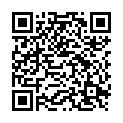|
|
|
| Module code: KI550 |
|
|
4V (4 hours per week) |
|
4 |
| Semester: 5 |
| Mandatory course: yes |
Language of instruction:
German |
Assessment:
Ninety-minute written exam
[updated 20.03.2007]
|
KI550 (P222-0020) Computer Science and Communication Systems, Bachelor, ASPO 01.10.2014
, semester 5, mandatory course
|
60 class hours (= 45 clock hours) over a 15-week period.
The total student study time is 120 hours (equivalent to 4 ECTS credits).
There are therefore 75 hours available for class preparation and follow-up work and exam preparation.
|
Recommended prerequisites (modules):
KI450 Communications Technology and Systems 1
[updated 01.07.2017]
|
Recommended as prerequisite for:
KI612 Broadband Technology and its Applications
KI683
[updated 24.01.2013]
|
Module coordinator:
Prof. Dr. Horst Wieker |
Lecturer:
Prof. Dr. Horst Wieker
Andreas Otte, M.Sc.
Jens Staub, M.Sc.
[updated 01.07.2017]
|
Learning outcomes:
Building on the knowledge acquired in “Communications Technology and Systems 1”, the communications networks covered are extended to include private networks. The main focus of the course is on the coupling between communications networks above layer 2, though SDH (Synchronous Digital Hierarchy) technology is also discussed. The SDH transport system functions as the backbone in many modern professional communications networks. Students will be able to apply their knowledge, particularly that relating to multiplex structures, pointer systems and overhead functions, to developing solutions to networking problems.
[updated 13.03.2007]
|
Module content:
1. LAN/WAN technologies (private networks)
2. Next-generation networks
3. Gateways in telecommunications networks
4. Multimedia gateways
5. Synchronous Digital Hierarchy (SDH) technology
[updated 13.03.2007]
|
Recommended or required reading:
SIGMUND G., Technik der Netze, Hüthing
GERKE P.R., Digitale Kommunikationsnetze, Springer
HAASS W.D., Handbuch der Kommunikationsnetze, Springer
RÖSSEL H., Jahrbuch 2001 Kommunikationsnetze, Addison-Wesley
[updated 13.03.2007]
|
Module offered in:
WS 2018/19,
WS 2017/18,
WS 2016/17,
WS 2015/16,
WS 2014/15,
...
|


